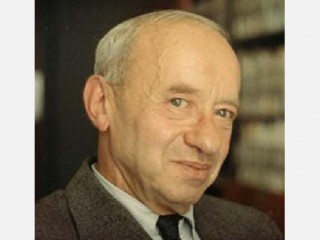
Alfred Tarski biography
Date of birth : 1902-01-14
Date of death : 1983-10-26
Birthplace : Warsaw, Poland
Nationality : Polish-American
Category : Science and Technology
Last modified : 2010-11-22
Credited as : Mathematician, and logician, one of the founders of the discipline of semantics
The Polish-American mathematician and logician Alfred Tarski is regarded as the cofounder of metamathematics and one of the founders of the discipline of semantics.
Alfred Tarski was born in Warsaw on Jan. 14, 1902. He taught at the Polish Pedagogical Institute from 1922 to 1925, and in 1924 he received his doctorate in mathematics from the University of Warsaw. He became an adjunct professor at the University of Warsaw in 1925. He married Maria Josephine Wilowski in 1929, and they had two children.
Tarski's mathematical contributions were noteworthy. In 1924 he collaborated with S. Banach in establishing the theorem on the decomposition of the sphere. In 1938 he presented an important paper on inaccessible cardinals and wrote another paper on the same topic in 1964 with H. J. Keisler. Tarski employed algebraic tools to treat metamathematical problems, as evident in his work on cylindric algebras (1961) written with Leon Henkin.
Like most mathematicians, Tarski simply accepted the assumptions of set theory as true. Further, he employed infinitistic set concepts in his work. Such procedures set his epistemology of mathematics apart from the major rival approaches—the formalism of David Hilbert and the intuitionism of L. E. J. Brouwer. Tarski's less restrictive methodology enabled him to introduce new concepts more freely.
Metamathematics studies formal theories. Tarski began working in the field of metamathematics in the 1920s. He presented an axiomatic theory of formal systems which capably embraces all the formal theories known up to 1930, and he was able to define such metamathematical notions as consistency, completeness, and independence. By 1935 he had presented a program for the description of all systems.
Tarski's most important achievement in logic is his formulation of the semantic method. Semantics is the study of the relations between terms (words or sentences) and their objects. He stated that his aim was "to construct … a materially adequate and formally correct definition of the term 'true sentence."' His early work in semantics, applying his method to logic and mathematics, centered on formalized languages, and in this context he began his pioneering work on the theory of models. His papers on logic from 1923 to 1936, collected and translated by J. H. Woodger, were published as Logic, Semantics, Metamathematics (1956).
In 1939 Tarski went to the United States. He was a research associate at Harvard University from 1939 to 1941 and a visiting professor at the College of the City of New York in 1941. In 1941-1942 he was a member of the Institute for Advanced Study, Princeton, and in 1942 he joined the faculty of the University of California, Berkeley.
Pursuing his researches in semantics, Tarski furnished significant definitions not only of the term "logical consequence" but even of the term "definability." His paper "The Semantic Conception of Truth and the Foundations of Semantics" (1944), had considerable impact on epistemology outside mathematics and logic, and is regarded as one of the major versions of the correspondence theory of truth.
Tarski became a naturalized American citizen in 1945. He was a professor of mathematics at Berkeley after 1946, a member of the National Academy of Sciences, and a president of the Association of Symbolic Logic.
Tarski spent the rest of his academic career at the University of California, Berkeley, serving as professor from 1946 to 1968, and being named Professor Emeritus in 1968. He helped establish the Institute of Basic Research in Science at Berkeley from 1958-60. He received the Alfred Jurzykowski Foundation Award in 1966, and honorary doctorates from the Catholic University of Chile, the University of Marseille, and the University of Calgary.
His books included Introduction to Logic (English version, 1941), Undecidable Theories (with others, 1953), Ordinal Algebras (1956), The Theory of Modules (editor, with others, 1965), and Cylindric Algebras (with others, 1971). He contributed more than 100 articles on logic and mathematics to professional journals during his career. In 1971, the University of California sponsored an international conference to discuss Tarski's influence and ideas on math, logic and philosophy, which Tarski himself attended.
Tarski was a visiting professor to the Catholic University of Chile during 1974-75. His last major work, with contributions from others, was Cylindric Set Algebras, published in 1981. He died in Berkeley, CA, on Oct. 26, 1983.
Little has been written about Tarski. For some background on his work see I. M. Bochenski, A History of Formal Logic (1956; trans. 1961), and William and Martha Kneale, The Development of Logic (1962).
















